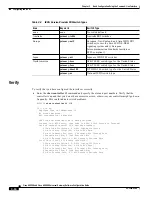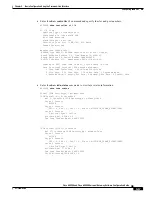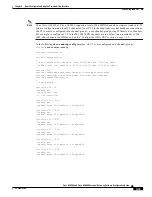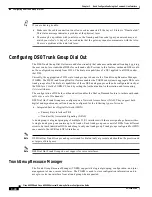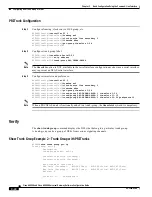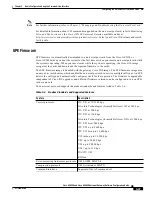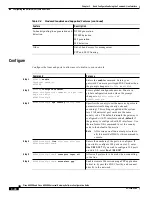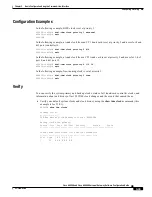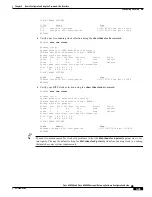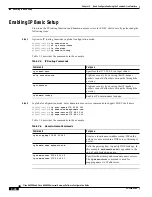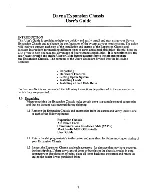
3-23
Cisco AS5350 and Cisco AS5400 Universal Gateway Software Configuration Guide
OL-3418-02 B0
Chapter 3
Basic Configuration Using the Command-Line Interface
Configuring the D Channels for ISDN Signaling
Channels : 1-23
Total channels available : 23
Data = 0, Voice = 0, Modem = 0, Pending = 0, Free = 23
Total calls for trunk group: Data = 0, Voice = 0, Modem = 0
Pend = 0, Free = 23
advertise_flag 0x00000040, capacity timer 25 sec tripl_config_mask 0x00000000
AC_curr 24, FD_curr 0, SD_curr 0
succ_curr 0 tot_curr 0
succ_report 0 tot_report 0
changed 0 replacement position 0
Configuring the D Channels for ISDN Signaling
The ISDN D channels carry the control and signaling information for your ISDN calls—for both
circuit-switched data calls, and analog modem calls.
The D channel notifies the central office switch to send the incoming call to particular timeslots on the
Cisco gateway or router. Each one of the B channels carries data or voice. The D channel carries
signaling for the B channels. The D channel identifies if the call is a circuit switched digital call or an
analog modem call. Analog modem calls are decoded and then get sent off to the onboard modems.
Circuit-switched digital calls are directly relayed off to the ISDN processor in the gateway.
When you configured your ISDN PRI on the CT1 or CE1 controller, you automatically created a serial
interface that corresponds to the PRI group timeslots. This interface is a logical entity that is associated
with the specific controller. After the serial interface is created, you must configure the D channel serial
interface that carries signaling. The configuration applies to all the PRI B channels (timeslots) for that
pri group.
Figure 3-1
shows the logical contents of a ISDN PRI interface used in a T1 network configuration. The
logical contents includes 23 B channels, one D channel, 24 timeslots, and 24 virtual serial interfaces
(total number of Bs + D).
Note
To allow a single D channel to control multiple PRI interfaces, see the
“Configuring the D Channels for
ISDN Signaling” section on page 3-23
.








